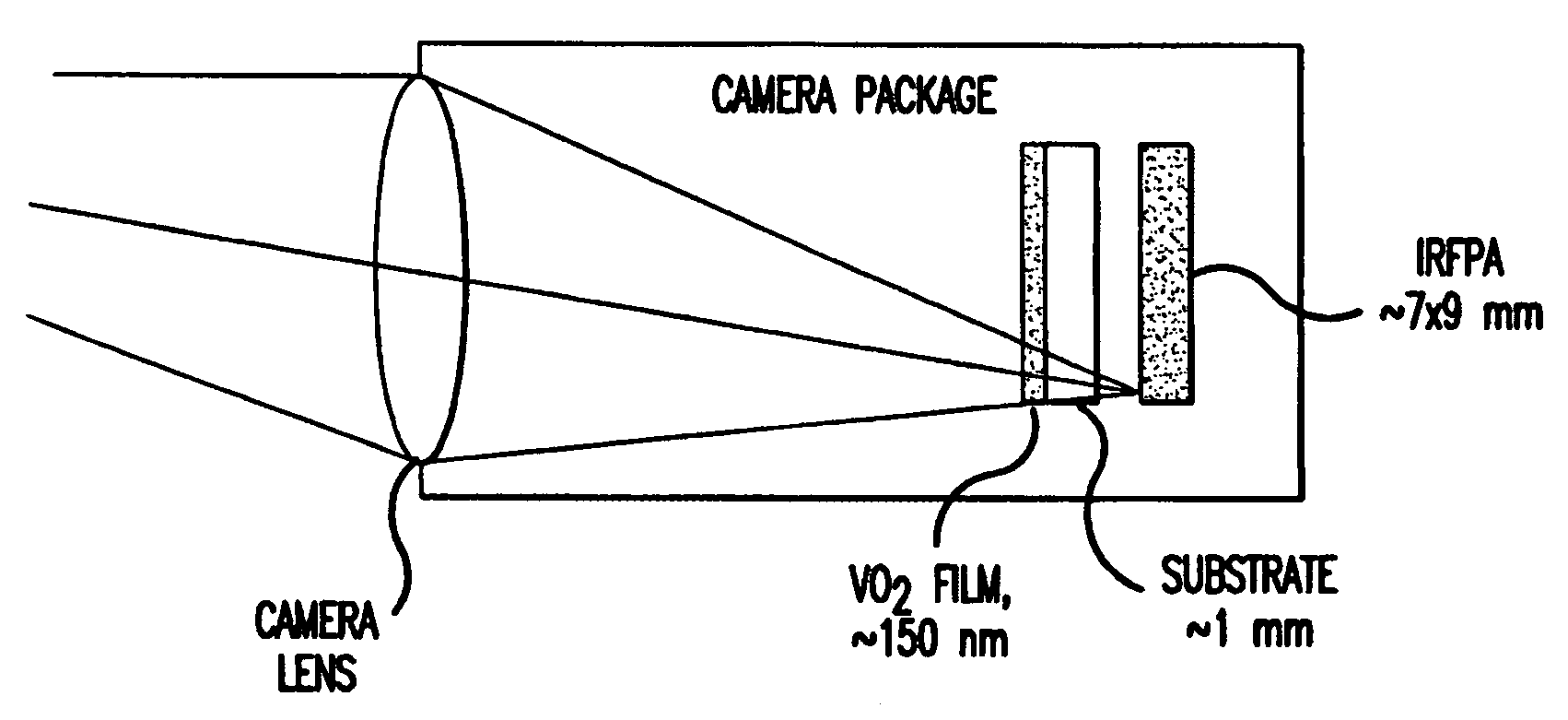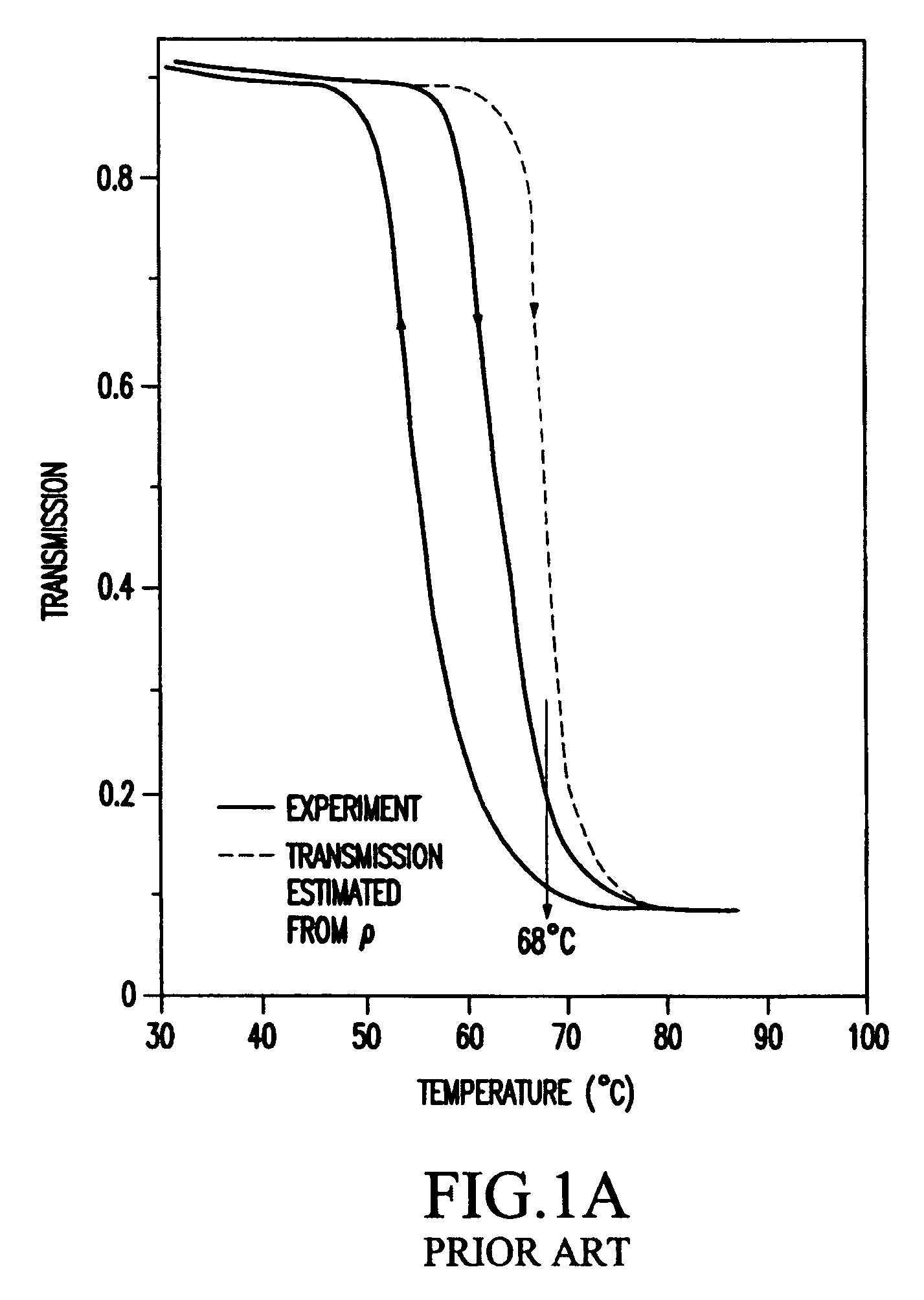Passive broadband long wave and mid-wave infrared optical limiter device
a technology of infrared limiter and long-wave infrared, which is applied in the field of passive infrared (ir) optical limiter device, can solve the problems of high threshold for optical limiter behavior to switch, nonlinear optical absorption process, and relatively narrowband device that is not suitable for handling a broadband range of wavelengths
- Summary
- Abstract
- Description
- Claims
- Application Information
AI Technical Summary
Benefits of technology
Problems solved by technology
Method used
Image
Examples
Embodiment Construction
[0017]This invention provides a passive IR optical limiter device for long wave infrared radiation (LWIR) detector protection. The LWIR optical limiter of the present invention makes use of a phase change in a VO2 film at around 68° C., at which temperature the VO2 changes from a semiconductor phase to a metal phase. While the semiconductor phase is essentially transparent, the metal phase is essentially opaque. A material—which strongly absorbs all optical radiation except in the wavelength region that the detector is interested in—is provided as a thin substrate layer attached to the VO2 thin film. When the intensity of the incident light illumination is over a certain threshold, the temperature of the VO2 film increases to over the 68° C. phase change temperature, and the VO2 film changes from “transparent” to “dark”.
[0018]Since the attached layer or substrate absorbs radiation, the LWIR optical limiter of this invention is designed for relatively low peak power, continuous wave,...
PUM
| Property | Measurement | Unit |
|---|---|---|
| wavelengths | aaaaa | aaaaa |
| wavelengths | aaaaa | aaaaa |
| thickness | aaaaa | aaaaa |
Abstract
Description
Claims
Application Information
 Login to View More
Login to View More - R&D
- Intellectual Property
- Life Sciences
- Materials
- Tech Scout
- Unparalleled Data Quality
- Higher Quality Content
- 60% Fewer Hallucinations
Browse by: Latest US Patents, China's latest patents, Technical Efficacy Thesaurus, Application Domain, Technology Topic, Popular Technical Reports.
© 2025 PatSnap. All rights reserved.Legal|Privacy policy|Modern Slavery Act Transparency Statement|Sitemap|About US| Contact US: help@patsnap.com



